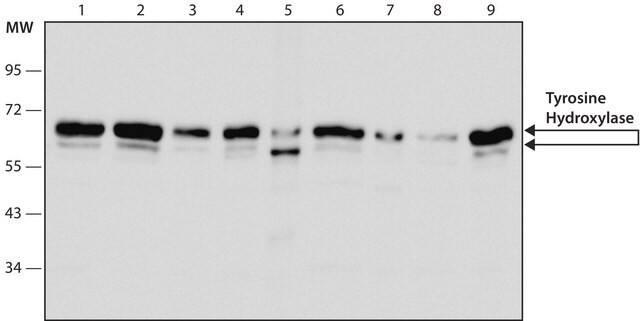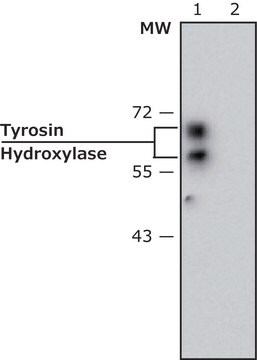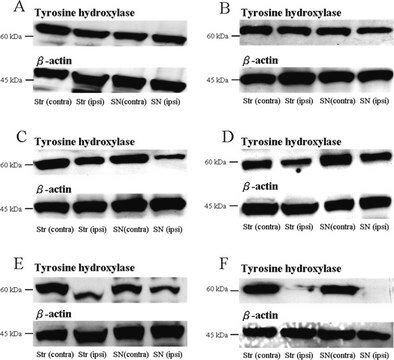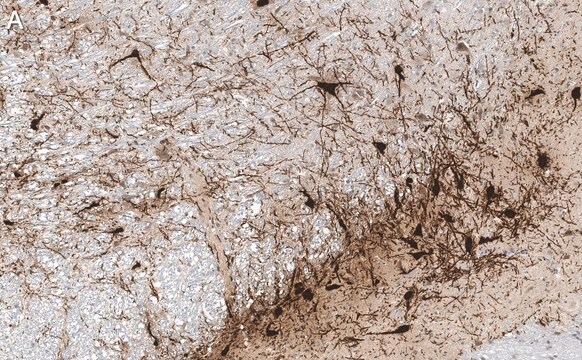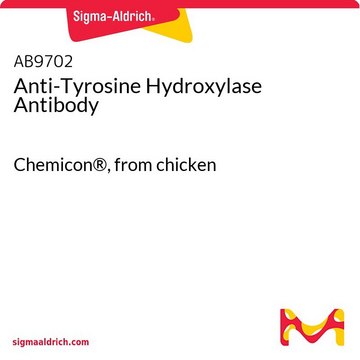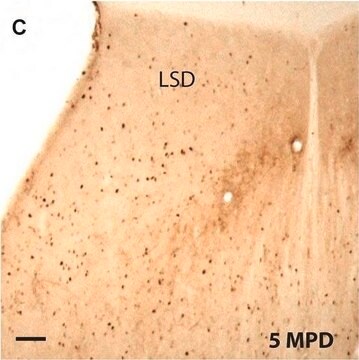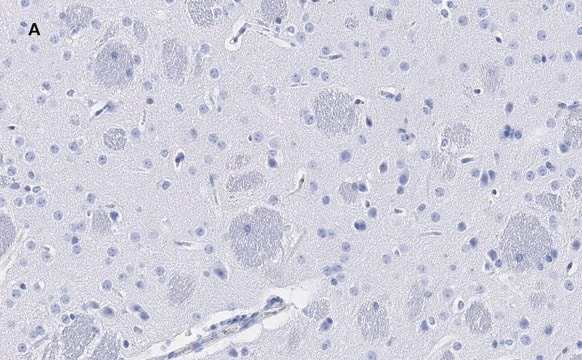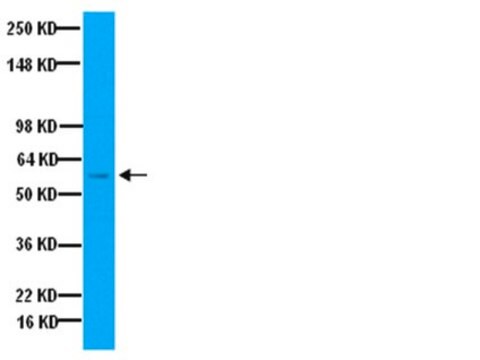Wichtige Dokumente
SAB4200697
Anti-Tyrosine Hydroxylase antibody, Mouse monoclonal
clone TH-16, purified from hybridoma cell culture
Synonym(e):
TH, TYH
About This Item
Empfohlene Produkte
Biologische Quelle
mouse
Qualitätsniveau
Antikörperform
purified immunoglobulin
Antikörper-Produkttyp
primary antibodies
Klon
TH-16, monoclonal
Form
buffered aqueous solution
Speziesreaktivität
rat, dog, rabbit, human, sheep, guinea pig, mouse, monkey, bovine
Konzentration
~1 mg/mL
Methode(n)
immunoblotting: 1-2 μg/mL using whole extract of rat PC-12 cells
immunohistochemistry: suitable
immunoprecipitation (IP): suitable
Isotyp
IgG1
Versandbedingung
dry ice
Lagertemp.
−20°C
Posttranslationale Modifikation Target
unmodified
Angaben zum Gen
human ... TH(7054)
Allgemeine Beschreibung
Tyrosine hydroxylase (TH) is encoded by the gene mapped to human chromosome 11p15. TH is a tetramer of four identical subunits, which is characterized with a regulatory, catalytic, and tetramerization domains. The enzyme utilizes tyrosine, BH4 and O2 as co-substrates, and Fe2+ as a cofactor.
Immunogen
Biochem./physiol. Wirkung
Physikalische Form
Lagerung und Haltbarkeit
Sonstige Hinweise
Haftungsausschluss
Sie haben nicht das passende Produkt gefunden?
Probieren Sie unser Produkt-Auswahlhilfe. aus.
Empfehlung
Lagerklassenschlüssel
10 - Combustible liquids
Flammpunkt (°F)
Not applicable
Flammpunkt (°C)
Not applicable
Hier finden Sie alle aktuellen Versionen:
Analysenzertifikate (COA)
Die passende Version wird nicht angezeigt?
Wenn Sie eine bestimmte Version benötigen, können Sie anhand der Lot- oder Chargennummer nach einem spezifischen Zertifikat suchen.
Besitzen Sie dieses Produkt bereits?
In der Dokumentenbibliothek finden Sie die Dokumentation zu den Produkten, die Sie kürzlich erworben haben.
Kunden haben sich ebenfalls angesehen
Unser Team von Wissenschaftlern verfügt über Erfahrung in allen Forschungsbereichen einschließlich Life Science, Materialwissenschaften, chemischer Synthese, Chromatographie, Analytik und vielen mehr..
Setzen Sie sich mit dem technischen Dienst in Verbindung.
